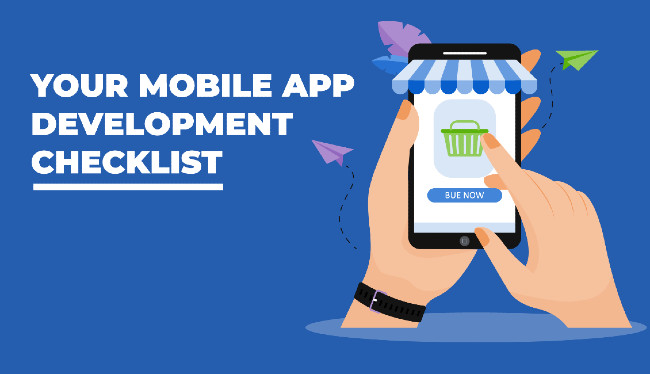
What is Rapid Application Development?
Most of the applications in the 1970s and 1980s were developed using the Waterfall software development model. One of the major drawbacks of using the waterfall model was that it didn’t allow quick and frequent iterations in the development cycle. This led to developers usually ending up with software that was not aligned with the project goal. Similarly, if the application needed changes in features and functionality midway in the development process, the developers had to start from the beginning of the cycle to carry out alterations. The Rapid Application Development (RAD) model was thus developed to overcome the challenges and to provide developers with an easy to use, rapid, and flexible application development model.
What is Rapid Application Development?
The history of the Rapid Application Development Model can be traced back to 1991 when it was created by James Martin. Unlike the Waterfall model, RAD is an agile software development model that allows quick iterations, leading to the quick development of prototypes and, eventually, the final software.
In a nutshell, RAD enables low-code rapid application development through which businesses can roll-out new applications faster.
What are the Phases of Rapid Application Development?
There are five phases in the Rapid Application Development methodology. The second and third phases are closely interlinked and can constitute a major part of the RAD cycle. The five phases of RAD are:
1) Defining the Project
In this phase, the project requirements, such as end-goals, timelines, and the budget, are discussed and finalized by the project stakeholders.
2) Building Prototypes
The development team starts building the software prototypes based on the objectives of the project. New prototypes are developed until the final product is ready.
3) Gathering Feedback from Users
The developers gather user feedback and make alterations to prototypes based on them. The feedback gathering and prototype development cycle are carried out until the final product is developed.
4) Testing the Software
This phase involves testing the software to find any potential bugs. It also helps ensure that the software is functioning as per the expectations.
5) Presenting the Product
This phase involves data conversion and user testing before the product is finally launched.
When can Rapid Application Development be Used?
You adopt a Rapid Application Development model in various circumstances, depending on the urgency, use case, and finances available. The ideal scenarios in which a RAD model can be used are:
You Need the Application Development Done Quickly
If you are running short of time and want to complete the project before the deadline, then the RAD model is a safe bet. RAD saves you the time and resources you would otherwise utilize in the planning and designing phase. You can make changes to the application on the fly by adopting a Rapid Application Development model, ensuring that you never miss a deadline.
When Finance Is Not an Issue
Although the RAD method is relatively inexpensive as compared to other development models, you might face a scenario where RAD can make you feel the pinch if you are working on a big-scale project. You might require hiring experienced application developers to work on your project, which, too, can require you to loosen your purse strings.
What are the Benefits of Rapid Application Development?
Rapid Application Development enables developers to quickly deliver products due to its agile and flexible nature. Some of the significant benefits of using Rapid Application Development are mentioned below.
Flexible
RAD models are highly flexible. The software code is malleable, meaning that developers can easily make changes to the code based on the user feedback and come up with new iterations of the software quickly.
Seamless Code Reusability
RAD doesn’t follow a strict iteration model, which makes it easier for developers to reuse code. Thus, developers have to spend less time in manual coding, and the testing time, too, is greatly reduced.
Increased Customer Satisfaction
Due to constant user feedback, developers can exactly know what’s working and what’s not. This can lead them to create immaculate software that can guarantee a high level of customer satisfaction.
What are the Drawbacks of Rapid Application Development?

There is no software development methodology that can be termed flawless. The same is the case with Rapid Application Development. Although a few, there are certain limitations of using Rapid Application Development. They are:
Difficult to scale for large projects: The Rapid Application Development model provides greater flexibility in the design and development phase. However, managing increased flexibility can become a challenge when working with a large scale development project. For example, a small team of developers can work seamlessly when working with the RAD methodology. However, if the project involves collaboration between multiple teams, the project can become difficult to handle.
Requires regular interaction with users: RAD models rely on constant feedback from users based on which developers can make changes to the application. However, this can turn out to be a curse, as frequent communication with users can become difficult and hamper the app development process. Similarly, frequent development and testing of various prototypes can become stressful after a while.
Building an application with the help of the Rapid Application Development model requires highly trained developers, as the process of developing here is somewhat sophisticated. If you don’t have the sources or the right team of developers, the application development project can turn out to be difficult, straining you of your energy, resources, and finances. What you will require is the support of an experienced application development company, such as Digital Fractal, that can efficiently manage your Rapid Application Development process. To get started, feel free to contact us.





